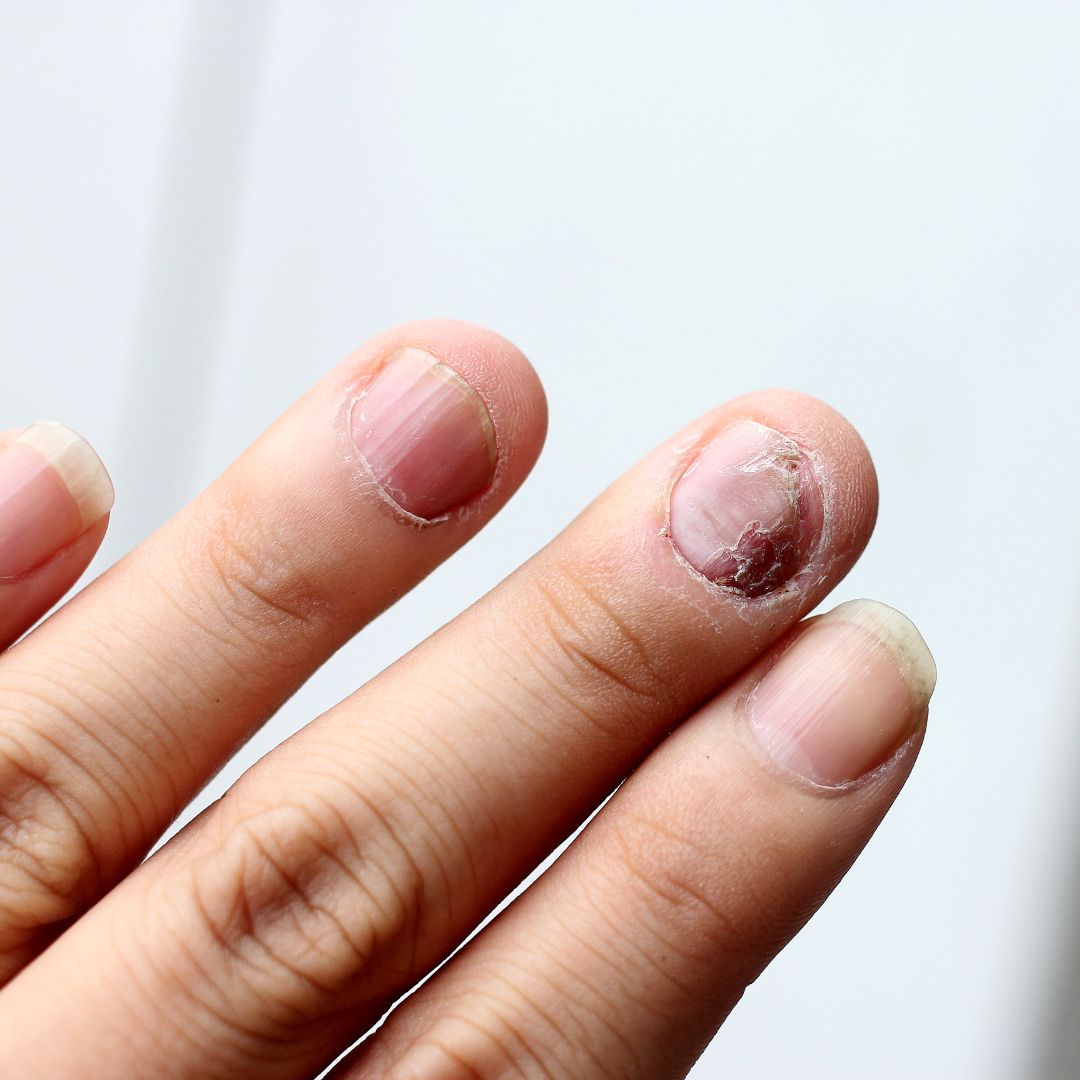Nail psoriasis often travels with plaque psoriasis. Here’s what to know and do about nail psoriasis.
If you’re one of the millions of people who live with plaque psoriasis or psoriatic arthritis, there’s a good chance that your finger and toenails will be affected too.
About 50 percent of people living with psoriasis experience changes on their nails, and roughly 90 percent of people with psoriasis will experience nail psoriasis at some point in their lifetime, according to the National Psoriasis Foundation.
Nail psoriasis tends to travel with plaque psoriasis, or raised, dry, itchy, patches on the skin that are covered with thick silvery scales. This makes sense as nails are part of the skin.
- Nail psoriasis may be marked by:
- Pitting or tiny dents in the nail
- White, yellow, or brown discoloration
- Lifting or separating of your nail from your finger
- Crumbling
- Buildup or blood beneath your nail
- Fungal infection. (About 35 percent of people who have nail psoriasis may also develop a fungal infection that could make the nails look and feel worse.)
- Pain and tenderness
These changes usually occur after psoriasis appears on your skin. Fingernails are more commonly affected by psoriasis than toenails. Like other types of psoriasis, nail psoriasis comes and goes throughout your lifetime.
What can you do about nail psoriasis?
There’s no cure for nail psoriasis, but good nail care and targeted treatments can improve your symptoms.
Taking care of your nails starts with keeping your fingernails short and leaving your cuticles alone. Other tips include:
- Rubbing moisturiser into the nail and cuticle
- Wearing gloves to protect your nails whenever you are doing something that could cause more damage
- Treating any accompanying fungal infection
It’s OK to use nail polish and gently buff your nails to hide dents. Don’t use artificial nails as this will increase the chances that your nails will separate from your fingers.
Taking care of affected toenails involves soaking them for at least 10 minutes in warm water to soften them before gently filing the thickened part down using an emery board, and always cutting toenails straight across the top.
The decision on how to treat nail psoriasis is based on your nail, skin, and joint symptoms and how they affect your overall quality of life.
Nail psoriasis treatments include topical steroids or vitamin D analogue creams, which can be rubbed into your cuticles. These therapies can help reduce inflammation and slow excess skin cell production.
Other potential treatments include:
- Removal of the nail
- Steroid injections into the affected nails
- Laser treatment
- Phototherapy or exposing your affected nails to ultraviolet light under medical supervision
Remember, be patient. Nails grow extremely slowly, and any treatment is aimed at the new nail that is developing from the nail plate.
Treating the underlying psoriasis may also have positive effects on your nail symptoms. There’s also a role for natural options such as our natural Psoriasis Treatment, which contains powerful organic plant extracts to reduce inflammation without steroids. The key to our formula is our blend of Pennywort, Sodium Chloride, and Silica which all work to reduce inflammation and soothe nails naturally. For best results, apply one to three drops to affected nails and rub it in gently. Repeat this process three or four times daily during a flares.
Further reading:
The Psoriasis and Psoriatic Arthritis Alliance. Psoriasis in the nails. https://www.papaa.org/learn-about-psoriasis-and-psoriatic-arthritis/further-resources/nail-psoriasis/
American Academy of Dermatology. What is Nail Psoriasis and How Can I treat It?
https://www.aad.org/public/diseases/psoriasis/treatment/genitals/nails
National Psoriasis Foundation. Hands, Feet & Nails.
https://www.psoriasis.org/hands-feet-nails/




